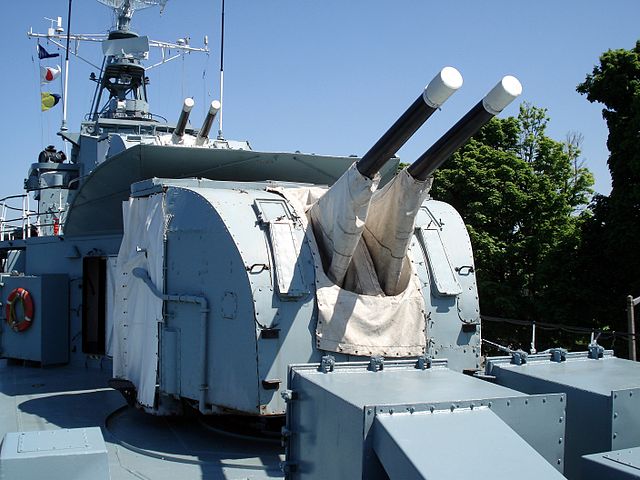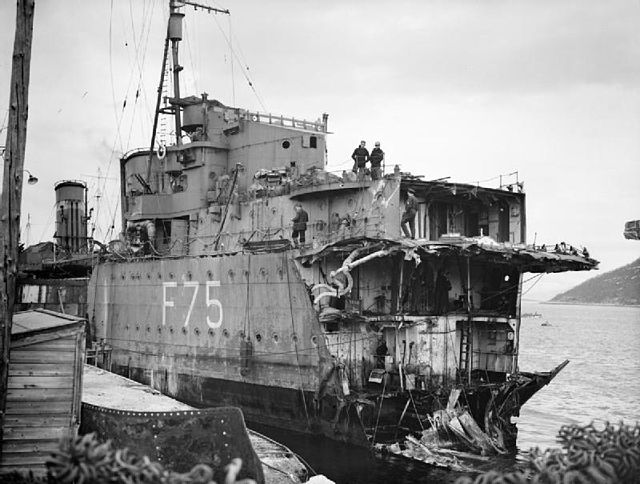HMCS Haida is a Tribal-class destroyer that served in the Royal Canadian Navy (RCN) from 1943 to 1963, participating in World War II and the Korean War. She was named after the Haida people.
HMCS Haida docked in Hamilton, Ontario, as a museum ship
Haida during World War II
Haida's motor cutter, which was used to rescue survivors of the sinking of HMCS Athabaskan on 29 April 1944
USS Buck transferring four-inch ammunition to Haida
Tribal-class destroyer (1936)
The Tribal class, or Afridi class, was a class of destroyers built for the Royal Navy, Royal Canadian Navy and Royal Australian Navy that saw service in World War II. Originally conceived during design studies for a light fleet cruiser, the Tribals evolved into fast, powerful destroyers, with greater emphasis on guns over torpedoes than previous destroyers, in response to new designs by Japan, Italy, and Germany. The Tribals were well admired by their crews and the public when they were in service due to their power, often becoming symbols of prestige while in service.
HMCS Haida, a Canadian Tribal-class destroyer and the only Tribal-class destroyer to be preserved
A twin Mk.XII mounting on HMS Javelin
Twin QF 4-inch Mk XVI naval guns of HMCS Haida
HMS Eskimo showing bow damage, Norway May 1940







